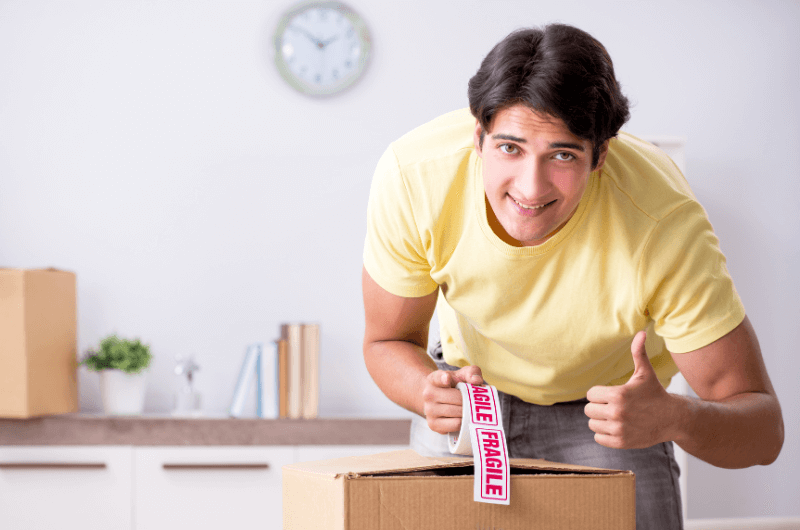Moving APT has over 20 years of experience in the moving industry, at every stage of operations. Dispatch? Been there. Delivery? Definitely done that. Packing? Oh yeah – we’ve been there before.
In all the time we’ve spent managing moves, we’ve learned what goes into a successful relocation. And one of the biggest stumbling blocks to a quick-and-easy moving day? You guessed it: Packing. Sure, loading and hauling can be tough, but when it comes to individually wrapping and boxing your items… well, let’s just say we offer professional packing for a reason.
If you’re DIYing it, you should learn how professional moving companies handle packing. And if you’re on the fence about moving in the first place, it’s important to know how move coordinators like Moving APT can help. Get your sharpies, get your boxes, and read on for the pro movers’ guide to packing fragile items.
DIY or Professional Help? Pros and Cons of Hiring Professional Movers
Can I afford professional moving? Is it worth it to hire a moving company? Do I have enough room in my car for all my stuff? The lead-up to a big move is full of questions, and one of the first you’ll ask yourself is how you’ll move in the first place.
Professional moving is our bread and butter, so we’re probably a little biased. But in the interest of fairness, we can’t ignore DIY moving. Here are the pros and cons of each option:
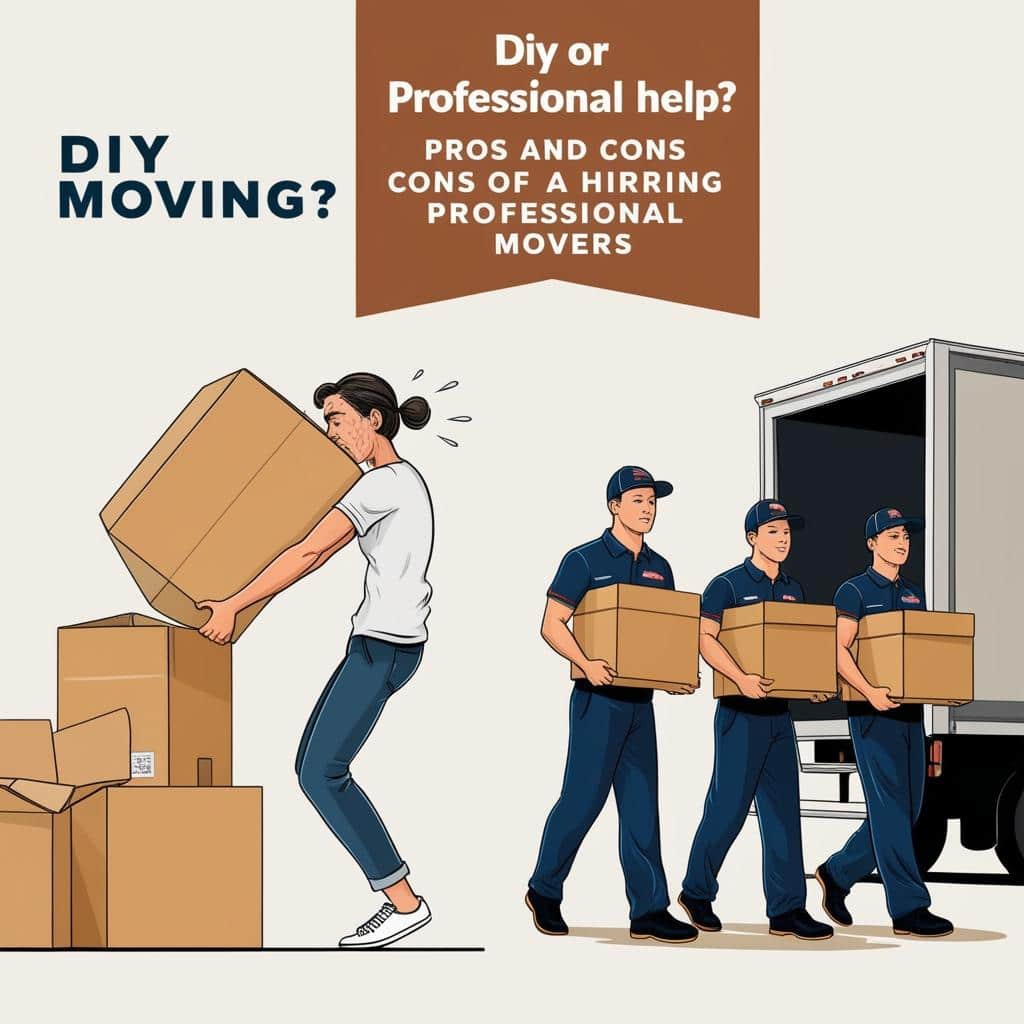
Professional Movers
Pros
- They’ll handle everything - including packing
- Moving companies offer tons of services to meet your needs
- Generally safer for your own health
- Focus on your fresh start, instead of unboxing and unloading
- Surprisingly affordable if you shop smart
Cons
- More expensive than a DIY job
- Gotta make sure you’re working with a good team*
- Extras and add-ons aren’t free
*Fortunately, when you book with Moving APT, we’ll connect you with a vetted moving team.
DIY Moving
Pros
- It’s cheap
- Good excuse for a road-trip
- Bragging rights
- You’re more in control (setting your own schedule, picking your own route)
- Great option if you don’t have a lot of stuff
Cons
- Major hassle
- Expenses add up (rental, gas, hotels, etc.)
- May have to miss work (and paychecks)
- Friends/family may bail when you need packing help
- Potentially dangerous
What are You Moving? Make a List, Get Organized
Before you run off to Home Depot, take some time to make a list of what you own and what needs the most packing.
- Downsize first. The less you have, the less money you’ll spend on packing. Clean house and downsize. Sell off your old and unwanted items so they don’t clutter up your new place (and so you don’t have to pay more money on moving day, either).
- Make a spreadsheet. Or a note on your phone. Whatever you decide to use, just make sure it’s easy to access and easy to edit when you suddenly remember something that you have to pack.
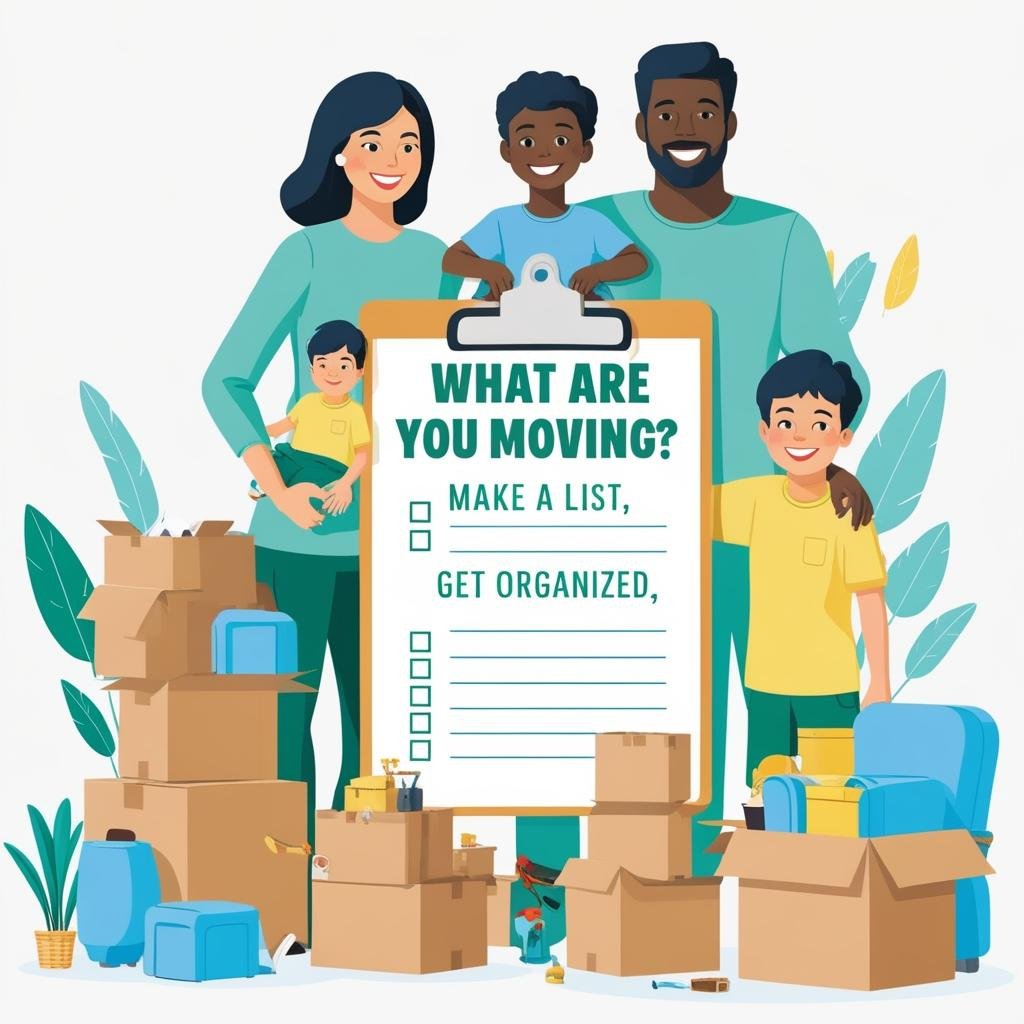
- Be honest. Think about the stuff that deserves special attention: Big items, fragile items, expensive items. Anything that needs multiple people to move is going to be a challenge.
- Think about the services you’ll need. Even if you’re DIYing it, you’ll need to include a truck rental, packing supplies, and more. This will help you map out your budget, too.
Boxes: More than Just Dead Trees
Boxes, boxes, boxes. We can go on for days about these – and we’ve written at length about them before. Here’s the quick rundown:
- Small boxes (16” x 12” x 12”): Small boxes are your go-to option for those dense-yet-small items. These boxes are usually a little sturdier than their cousins, but are limited by overall size.
- Medium boxes (18” x 14” x 12”): A great blend of small box sturdiness and large box real estate. Medium boxes are a good do-it-all solution, but they’re usually the first to get sold out during peak moving season.
- Large boxes (18” x 18” x 16”): Large boxes are not for heavy items. Instead, these should be packed with your bulky-yet-light items, like pillows and comforters. Resist the temptation to put anything else in these – they just don’t have the strength.
- Specialty boxes (size varies): Get a dish pack boxes for your fragile glassware and china. These guys have special inserts to keep everything steady and secure. There’s also adjustable boxes for mirrors and paintings, wardrobe boxes, and more.
Pro Tip
Want to find boxes for cheap? Bookstores and liquor stores may have some spare boxes lying around, and they might be down to donate them for the cause. Just don’t go dumpster diving.
Load Up on Padding Supplies
Don’t just throw your stuff in a box and call it a day. If you’re doing your own packing, follow the pros’ example and use the right tools for the job.
- Bubble wrap: You already know what this is. You can buy it by the yard, and it comes in big ol’ rolls of bubbly goodness. Bonus: Hours of entertainment after you’ve unpacked.
- Furniture pads: These are for larger items of furniture that can’t fit in boxes. Think of them as big, padded blankets. Furniture pads protect those big pieces, and they also soften their hard edges to make loading a truck less painful.
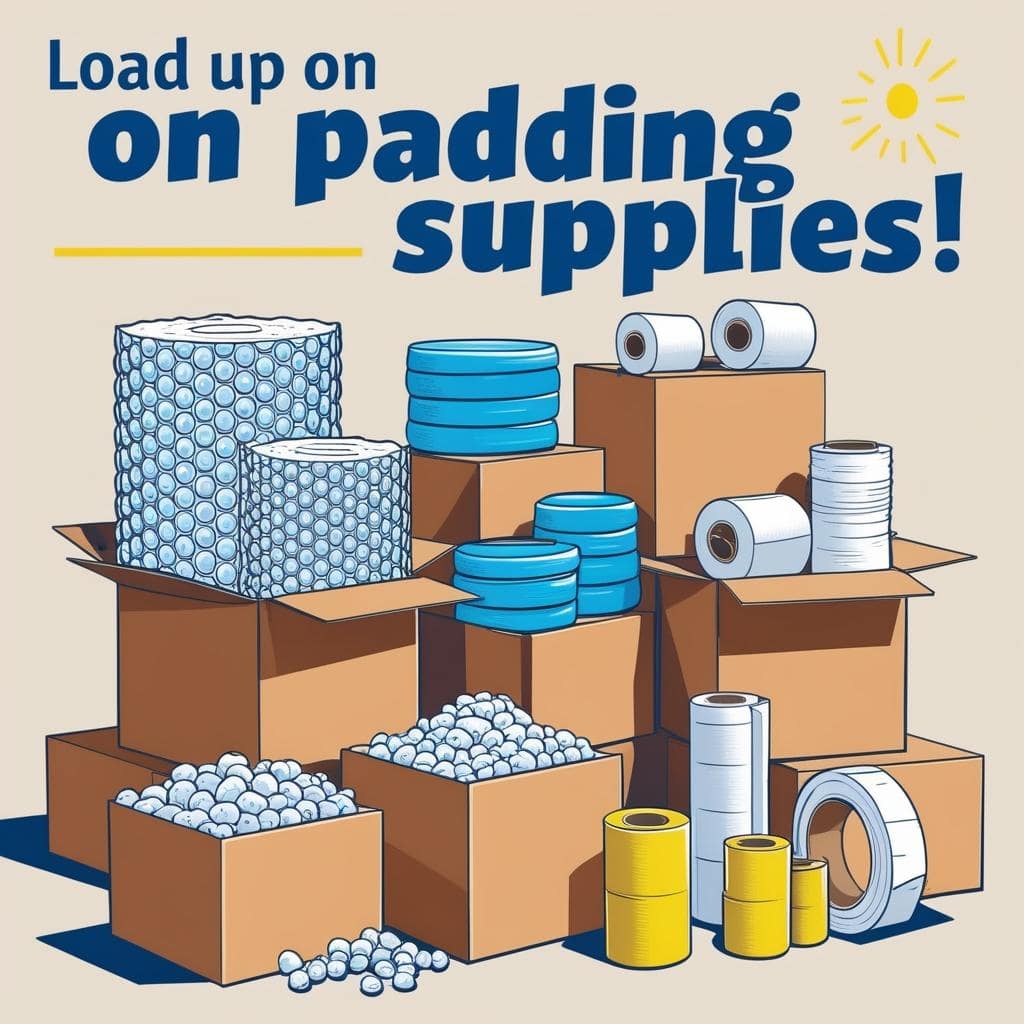
- Packing paper: When you’re packing, the name of the game is void fill. If there’s empty space in a box, that means there’s room for items to knock around and bang themselves up. Use bunched-up packing paper to fill in empty space.
- Packing peanuts: Speaking of filling empty space, packing peanuts are a classic solution. These are great for filling in empty space, especially when you’re trying to keep fragile items extra cushioned.
- Air cushions: Air cushions for packing are a more modern take on old school packing peanuts. They’re big chains of air-filled, plastic pillows. Amazon loves to use these, but you can also buy them for your own packing needs.
Handle With Care: Book Specialty Moving
There are some items that need extra TLC. We’ve seen it all, from expensive artwork to vintage motorcycles. If you’re committed to DIY moving, you can still book professionals to help out with specialty moving.
- Auto transport: Auto transport is a must-have, unless you’re willing to drive and re-drive the same route with every car you own. You can book car transportation in an open trailer (cheaper, but less protected) or a closed trailer (expensive, but the VIP package).
- Premium moving services: Artwork, pianos, pool tables – these are all fragile, high-value items that need serious attention to detail. Premium movers specialize in one (or more) of the above, and hiring them is a lot easier than trying to fit a piano in your car.
- Custom crating: Real life isn’t Minecraft, so stuff doesn’t always fit in nice, cube-shaped boxes. That’s why some moving companies provide custom crating: they’ll build a box around whatever needs packing, complete with wood shavings and sawdust.
Helping Hands - is Moving Labor Worth It?
If you’re trying to DIY as much as possible, moving labor can be a real lifesaver.
Moving labor is exactly what it sounds like: It’s a skilled team that shows up, and does the heavy lifting so you don’t have to. It’s also a great tool if you’re trying to keep your expenses down. Once your movers get the heavy stuff in the truck, they’ll get out of your way and you can take care of the rest.
We also recommend moving labor for your own safety. Odds are, you have heavy items lying around that are just too much for one person to carry. Save your back, save your wallet, and look into moving labor as a good compromise between DIY and full service moving.
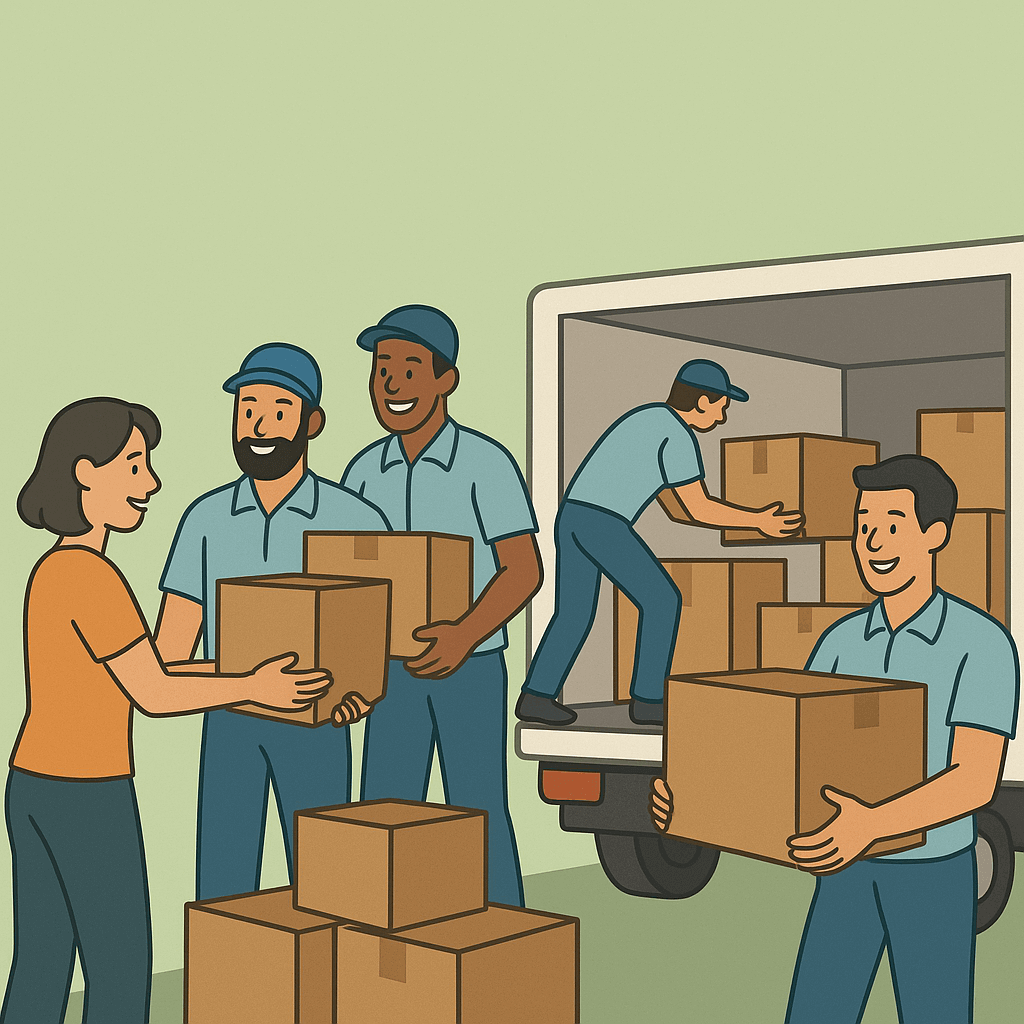
Tip and Tricks (and “Lifehacks” that Just Don’t Work)
Don’t fall for the latest insta fad or Tiktok clip. There’s some tricks that work, and some tricks that’ll leave you with a pile of broken belongings.
Do this:
- Downsize first. Long distance movers charge per mile, per pound. Local movers charge per hour. Either way, more stuff means a higher price tag. Downsize before you shop for moving companies.
- Book in advance. After you’ve downsized, try to book far in advance. Something like 2, 3 months is ideal. This gives you 8-12 weekends to pack and prepare, and sometimes movers give a discount for the added flexibility.
- Fill in empty space. We can’t emphasize this enough: void reduction. Empty space is the enemy. Fill it all in with packing peanuts, wrapping paper, and air cushions. The less your items can knock around, the better.
- Stack boxes by size. Don’t pile large boxes on top of small boxes, and don’t put heavy boxes on top of light boxes. Sort your boxes out by size, and stack like with like. This’ll avoid any collapses or crushing.
- Use a staging area. While you’re organizing your boxes, make sure your packed boxes are arranged in one easy-to-access area, whether it’s a spare bedroom, garage, or just a corner. This will make loading the truck much more streamlined.
- Pack an essentials bag. Pack your boxes starting with the least-used items first. All your daily essentials should go in a backpack or suitcase, along with a couple changes of clothes. You’ll live out of this bag for a few days while you’re unpacking your boxes.
Don’t do this:
- Don’t try the ol’ t-shirt trick. If old t-shirts were enough to keep your glasses and plates safe, professional movers would all use old t-shirts. Don’t cheap out on your packing supplies. Get the good stuff, or better yet, hire pros who come equipped with it.
- Don’t use damaged boxes. That old Amazon box from three Christmases ago is not going to handle it. If a box has a dented corner, a wobbly edge, or any kind of stain from getting wet in its lifetime, it’s structurally compromised.
- Don’t ego-lift. You cannot lift a refrigerator into a moving truck. You cannot lift a washing machine into a moving truck. You cannot lift a piano into a moving truck. You can, however, book moving labor for some extra muscle and helping hands.
Book Your Movers with Moving APT
Moving APT has a whole network of professional movers to help you out on moving day – whether you’re looking for full service movers to take care of the whole process, or you’re trying to DIY as much as possible. We also made it super easy to get a custom quote.
Want to get started? Check out our moving cost calculator, and we’ll get you a free estimate.
Prefer not to leave your phone number?
No problem!
Schedule an Appointment at your Convenience
(Only email is required)
Schedule an AppointmentOr Call Now
800-360-0037Wait!
You're only a few steps away from finding the perfect movers for your needs
Prefer to Schedule an Appointment
No problem! Schedule an appointment at your convenience by clicking the link below. We'll be ready to assist you whenever works best for you. Thank you!"
Setup an appointmentMoving FAQs
How much does packing cost?
Packing can cost anywhere from a few hundred bucks to a couple grand. It all depends on how much you’re moving, and how far you’re traveling. A local move and a studio apartment can usually be packed for about $300.
How far in advance should I book my move?
We recommend booking your move between 2 and 3 months in advance. This gives you plenty of time to pack, prepare, and procrastinate.
What’s the difference between local and long distance moving?
Local movers handle anything under 100 miles and within the same state. On the other hand, long distance moving companies handle moves that are over 100 miles or across state lines.
Local movers charge per hour, per mover. From our experience, it takes about two movers per bedroom. Their long distance counterparts charge per mile, and per pound.
What’s the cheapest way to move?
The cheapest way to move is to DIY the whole thing, but you have to stay super disciplined to make it work. There are a lot of expenses you can rack up along the way, from truck rentals to gas, food, and lodging. A lot of people tend to overlook their missed work hours and paychecks, too.
If you’re not careful, these expenses can bring you awfully close to the cost of a full service move – except you won’t be getting the convenience of professional movers for the money you’re spending!
Is storage worth it?
Storage is a great option if you’ve got A: too much stuff, or B: too little time. It’s definitely worth it, and sometimes it’s just unavoidable. Fortunately, a month of storage means you’ve got time to unpack and get settled in at your own pace. Plus, some storage providers can deliver your items directly to your door, so you don’t have to make a trip to a storage unit.



